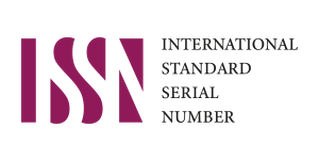Characteristics of Organic and Inorganic Substances in Leachate Wastewater Talumelito Regional Waste Final Disposal Site
Abstract
Keywords
Full Text:
PDFReferences
Andika Dimas P., dkk. pemanfaatan air lindi landfills jatibarang sebagai media alternatif kultivasi mikroalga untuk perolehan lipid. Jurnal Teknik Lingkungan, Vol. 6, No. 1 (2017)
Dwi Astuti, dkk., Penurunan toksisitas leachate (air lindi) dari TPA putri cempo mojosongo surakarta dengan pac (poly aluminum chloride. J. Manusia dan lingkungan, Vol. 17, No.l, Maret 2010: ll-25.
Erni Mahluddin Yatim, and Mukhlis. 2013. Pengaruh Lindi (Leachate ) Sampah Terhadap Air Sumur Penduduk Sekitar Tempat Pembuangan Akhir ( TPA ) Air Dingin. Vol. 7, No. 2
(Kalapati, 2013). Uji Kadar Kualitas Lindi TPA Sampah Regional Talumelito Kabupaten Gorontalo.
Nanda, Sari., Karakteristik Air Lindi (Leachate) di Tempat Pembuangan Akhir Sampah Air Dingin Kota Padang, Laboratorium Fisika Bumi, Jurusan Fisika, FMIPA, Universitas Andalas Kampus Unand, Limau Manis, Padang, 25163. ISSN 2302-8491 Jurnal Fisika Unand Vol. 6, No. 1, Januari 2017
Nusa Idaman Said dan Dinda Rita Krishumartani Hartaja. Pengolahan air lindi dengan proses biofilter anaerob-aerob dan denitrifikasi. JAI Vol 8. No. 1. 2015
Peraturan Menteri Lingkungan Hidup dan Kehutanan Republik Indonesia No.5 Tahun 2014, Baku Mutu Air Limbah bagi Usaha yang Belum Memiliki Baku Mutu Air Limbah yang Ditetapkan.
Peraturan Menteri Lingkungan Hidup dan Kehutanan Republik Indonesia No. P59/Menlhk/Setjen/Kum.1/7/2016, Baku Mutu Air Lindi bagi Usaha Tempat Pemrosesan Akhir Sampah.
Zuhda, Nur Prabowo, dan, Pengolahan air lindi menggunakan metode koagulasi flokulasi dengan kombinasi bio koagulan sodium alginat - koagulan al2so4 dan advanced oxidation processes (aops) dengan fenton (fe/h2o2). Vol. 6, No. 1 (2017).
DOI: https://doi.org/10.34312/jambchem.v4i1.17513
Refbacks
- There are currently no refbacks.
Copyright (c) 2022 Jambura Journal of Chemistry
EDITORIAL OFFICE


This work is licensed under a Creative Commons Attribution-NonCommercial 4.0 International License.



